I’ve always loved tea, but never considered it more than a drink, hot or cold.
Recently, that has changed. And two things have done that for me: a book – ‘The Art of Blending by Lior Lev Sercarz’ which has nothing to do with tea, and everything to do with spices and one man’s passion; and food52.com’s last contest ‘Your best recipe with Tea’.
The Art of Blending was a book I won at the start of the year, on food52.com. Its all about spices, in unique combinations and used in a myriad of ways. And though there aren’t any tea recipes, it is rich in history, and culture and innovation that it has shaped my approach to tea, and coffee even! Thank you Lior.
I’m the sort of person who likes a ‘goal-post’ – give me a theme and I can channel my creative juices to deliver the goods and that’s exactly what the Tea contest got me doing – innovating. My aim isn’t to win the contest, but to learn to see tea differently.
For me, the heart of innovation is being able to see an object as just that – an object, and not one tied to or defined by a specific use. So we can stop seeing tea as an ingredient that only comes alive in hot water. We can see it as an ingredient that has a life, right from the box or bag it comes in, one that can blossom as leaves, and in the absence of hot water.

And so the idea of using tea as a spice excites me. Where formerly it has only been a drink. Whether it is throwing a pinch in a batch of cookies, dusting a Madeleine pan with some, spooning out teaspoonfuls to go in cake batter, or even tossing just-fried churros in fragrant tea and sugar, tea can take on new character, new life.
In the week of the contest, I churned out everything from tea-spiced Madeleines, to Matcha chip cookies, Tea drop scones and a delightful tea jam, modelled on the French confiture au lait.
All amazing, all a revelation of the diverse and intense character of tea, and all easy to rustle up.
Here are my favourite tea recipes, with links to more on food52.
Recipe #1: Pink Citrus Madeleines
Madeleines are delightful French cake-cookies, made in a special shell-shaped mould. They are easy to mix and bake in 10 minutes so are even an achievable morning bake and most of all, they are a handy size made perfect for dunking into morning cuppas. These are particularly wonderful because the varied ingredients in the pink citrus tea – rosehip, orange peel, hibiscus, apple peel, lemon grass, lemon peel and grapefruit infuse each bite with so much flavour. Plain Madeleines are definitely a thing of the past!

Ingredients
8 tablespoons melted (brown) butter, (6 for batter, 2 for greasing the pan) ¾ cup all-purpose flour 5 tablespoons icing sugar 1 teaspoon baking powder’Citrus’ tea-sugar mix, made by blitzing 4 teaspoons tea leaves (4 teabags) with 4 teaspoons caster sugar (I used Lipton’s Pink Citrus tea) 2 eggs, separated ( Whites beaten till stiff) Zest from 1 Meyer Lemon (or an orange/clementine) Juice from 1 Meyer Lemon (or an orange/clementine) 1 tablespoon vanilla extract
Directions
Preheat the oven to 350 deg F (about 180 deg C). Prepare you Madeleine moulds (I have a 9-mold Madeleine pan – you will need two) by greasing with melted butter. Using half of the citrus tea-sugar mix, dust the molds, and tap out any excess. Reserve the other half and the excess for the cake batter.
In a bowl, sift the flour, icing sugar and baking powder together. Add the remaining tea-sugar mix and whisk lightly to combine.
Gently whisk in the remaining 6 tablespoons of butter, the egg yolks, Meyer lemon zest, Meyer lemon juice, and the vanilla extract. Add the whipped egg whites to the mix and fold into the mixture.
Allow the batter rest int he refrigerator for an hour up to a day. (Apparently, the refrigeration is supposed to allow the classic Madeleine ‘hump’ form.
When ready to bake, spoon the batter into the molds, about two-thirds full (a heaped teaspoon). Bake the Madeleines in the centre of the pre-heated oven for 10 – 12 minutes until golden and well-risen, with a bronzed rim.
Remove from the oven and allow to cool in the pan for about 5 minutes before turning out onto a wire rack. Eat warm or cold. Dunked or on their own.

Other flavour combinations I’ve made:
- Pistachio-Rosewater-Matcha Madeleines
- Chia Madeleines (similar to the version above – just replace the pink citrus tea with Chai tea)
Recipe #2: Orange Jaipur Chouquettes
Chouquettes are cousins to the choux bun, made by cooking the dough, paté choux. These however are studded with coarse pearl sugar, sucre perlé and baked to yield a light, airy bun that’s delicious and whimsical – France at its finest.
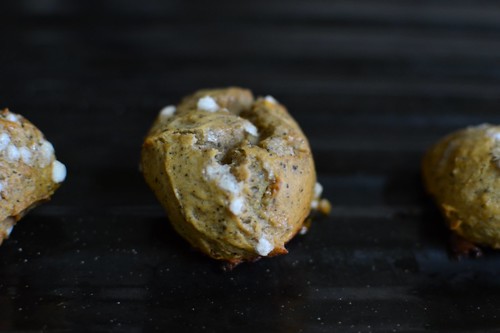
Ingredients
½ cup whole milk1/3 cup melted (brown) butter
1/4 teaspoon fine sea salt
1 tablespoon brown sugar
1 cup all-purpose flour, sifted
3 teaspoons loose tea, ground with 3 teaspoons white sugar
3 eggs, at room temperature
Pearl sugar for sprinkling (see note)
1 Orange tea bag or 1/2 teaspoon Orange tea leaves
Optional, to serve – whipped cream, chocolate mousse, chocolate sauce
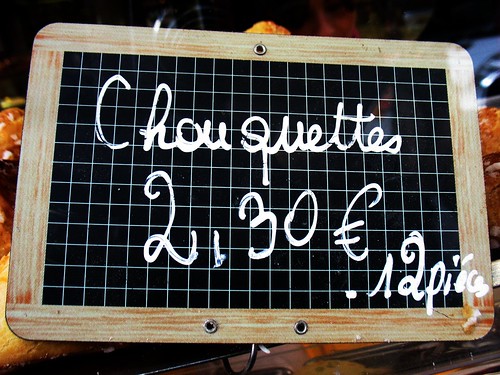
Directions
To make the dough: combine the milk, butter, tea mixture, salt, brown sugar, and 1/2 a cup of water in a small pot or pan. Bring to a boil over medium heat and once it begins to froth, remove from the heat and add all the flour at once, stirring with a wooden spoon until well blended and a cohesive dough is formed. Return the pan to the heat, and keep stirring on low until the mixture forms a smooth ball that pulls away from the sides of the pan.
Allow it to cool for 3 – 5 minutes, and then add the eggs, one by one, stirring well after each addition. Don’t be afraid that the eggs will get scrambled, they are ‘cooler’ – but be sure to work quickly. Put the pastry in a bowl, cover and refrigerate for at least half an hour or up to a day.
Make the tea sugar syrup: Combine the 2 tablespoons of caster sugar with 2 tablespoons of water, over high heat, turning it down to a simmer for a minute. Stir, to ensure the sugar is dissolved. Take it off the heat, and add the tea bag or tea leaves, leaving it to stand for a couple of minutes. Strain syrup and discard teabag or leaves. Allow the syrup to cool and set aside for later use.
Preheat the oven to 400°F (200°C) and line a baking sheet with parchment paper or a silicone baking mat. To ensure that the chouquettes are well studded with sugar, sprinkle some pearl sugar evenly on the prepared sheet. Remove the batter from the refrigerator and put into a piping bag fitted with a plain tip to form small balls of batter, about the size of a walnut. Alternatively, use 2 teaspoons and portion out dough onto the baking sheet, leaving at least an inch of space between them. Using a pastry brush, brush the dough balls with the tea sugar syrup and sprinkle with pearl sugar. (Any pearl sugar which doesn’t adhere to the buns after baking can be collected and reused) .
Bake for 20 minutes, until puffed up and golden brown making sure not to (open the oven door in the first 10 minutes. Check the base of the chouquettes to check for doneness – they should be bronzed. Turn off the oven and leave the door slightly ajar for another 5 minutes to ‘temper’ so they don’t deflate at room temperature due to the temperature difference. Transfer to a rack and allow to cool completely before serving, with your favourite tea or coffee! Leftovers should be stored at room temperature in an airtight container. To make almost as good as new, reheat for 5 minutes in a 300°F (150°C) oven.
Recipe #3: Tea Drop Scones
Drop scones are a Scottish pancake – they resemble American pancakes, but are sturdier, and not as fluffy! The name is funny, and not at all related to the traditional baked scone, nor do they resemble the chewy, donut-like Utah scones. I love the rims which take on a nice barely-crisp texture with a chewy interior. These are particularly fragrant and delicious, I have to admit.
Ingredients
25g plain/all-purpose flour 1 tsp baking powder Pinch of salt 2 tablespoons loose tea leaves, ground with 2 tablespoons caster sugar (I used my favourite Orange Jaipur tea leaves) 2 eggs, lightly beaten Up to 100ml milk 2 tablespoons melted (brown) butter Sunflower oil or butter, for greasing the panDirections
In a large bowl, sift the flour, baking powder and salt. Add the tea leaves-sugar mixture and whisk together briefly to combine.
Make a well in the centre of the flour mixture and pour in the egg and a quarter of the milk. Start beating with the whisk, gradually incorporating the flour. Beat in the melted butter and slowly add more milk and incorporate more flour until you have a smooth batter that drops slowly off a tea or tablespoon.
Heat a heavy-bottomed frying pan over medium heat. Lightly grease with oil or melted butter. You’ll have to cook them in batches – drop tea/tablespoonfuls of the mixture into the pan, leaving room for them to spread. After just a minute or two, they will set and you should see bubbles on the surface. Turn them over so the other side cooks and browns, about another minute. Remove from the pan and set aside in a warm place till all the batter is cooked or used up. Alternatively, you can cover and refrigerate the left over batter for up to 3 days.
Serve warm with butter, jam, whipped cream, quarters of citrus, maple syrup…..or do like we do sometimes and dip them in pots of warm chocolate sauce, fondue-style.
Recipe #4: Confiture au Thé Madame Gris (Lady Grey Tea Jam)
This is a take on the French Milk Jam, Confiture au Lait, a specialty of the Normandy region – think of it as the Dulce de Leche of France. Confiture au lait is made by cooking down whole milk, sugar and split vanilla pods for an hour or two – in the end, you have a ‘caramel’ sauce that’s as delicious as can be. This combines my love for milk jam, with a stronger love of Lady Grey, the citrusy version of the famous Earl Grey, and a divine addiction to caramel.
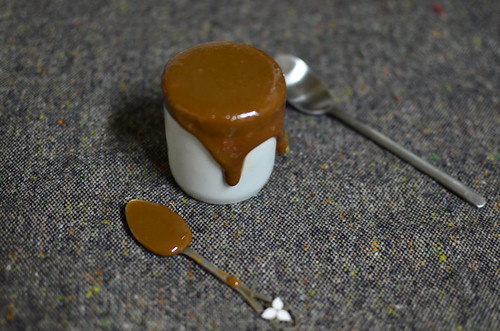
The result is a sweet, slight bitter and totally fragrant jam that is rife with orange and bergamot flavours. It is totally at home on a slice of buttered crusty French bread as well as lining the base of a tart, topped with bananas and whipped cream, swirled through some vanilla ice cream and sandwiched between two cookies – the choice is yours.
Ingredients
500ml whole milk 180g sugar 2 vanilla pods, split and seeds scraped out, with pods reserved 4 Lady Grey teabagsDirections
In a heavy sided, deep pot (I used a ‘small’ one – about 15cm deep and 15 cm wide) – combine the milk, sugar and vanilla seeds and split vanilla pods. Bring to the boil, add the four tea bags and turn down to simmer, on low heat.
Simmer and stir using a wooden spoon, making sure the spoon scrapes the the bottom of the pan to move bits and prevent it from burning. Stir every 10 minutes. Sometimes it will foam and froth, skim – stir it in and continue (I agree this can be tedious but the results are worth enduring tedium for, in my humble opinion – in any case, gather your friends around the cooking pot and take turns stirring while you chat!)
After 45 minutes, when the mixture is a golden caramel colour and the flavour of tea shines through, remove and discard the tea bags. The mixture would have reduced in volume to about a quarter.
Keep stirring till you get a loose honey consistency. It will thicken to a paste, like Nutella or peanut butter once it cools down.
Store in clean, sterilized jars and allow to cool. Once cool, refrigerate and allow the jam ‘rest’ – 2-3 days before eating. If it is too stiff when you’re ready to devour it, warm it gently on the stove top, or in the microwave. Slather on bread, spread on bread dough to make tea jam sticky rolls, with pecans or eat by the spoonful.
Wonderful resources for Tea cooking
The Tea Foodie – a food blog by Zanitea, with sweet and savoury tea recipes
A collection of tea recipes on Food52.com; including my Matcha(Mint) Chip Cookies
Tea-smoked Mackerel, on Kitchen Butterfly
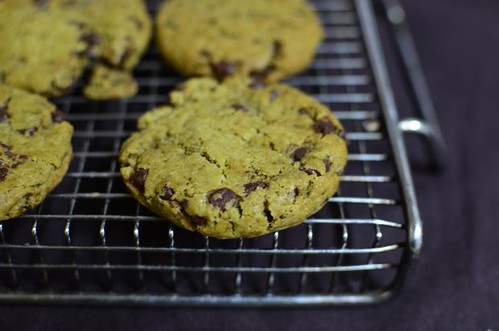

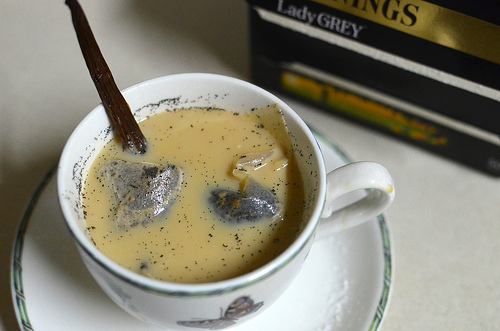

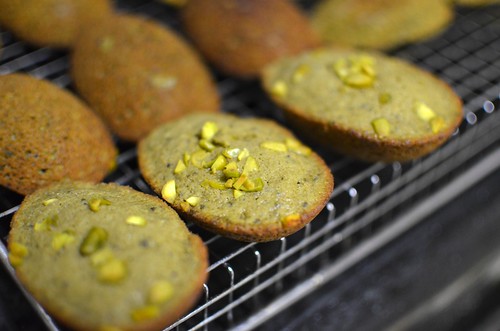

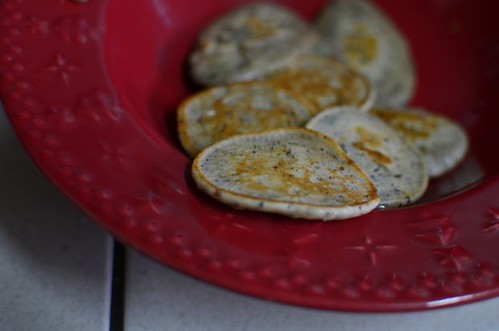
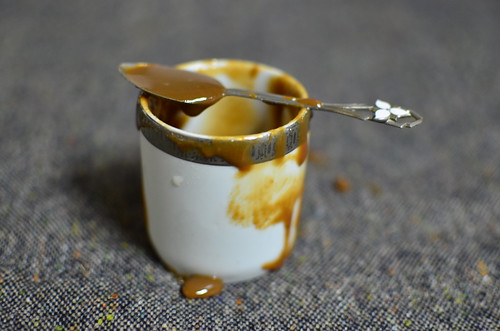
Leave a Reply